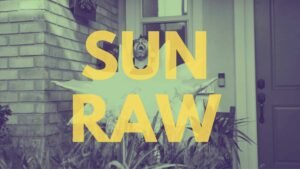If you’re reading this post, you likely purchased my eBook, “10 Video Story Structures: Create Standout Videos that Attract Your Ideal Clients” or are considering doing so.
If you didn’t, I recommend you check it out or read more about using story structures to create videos on this blog.
Then come back to this post, which addresses several specific objections that naturally arise when working with story structures.
That being said, if you’re aspiring to implement video as part of your marketing efforts, you will likely find value in the ‘personal doubts’ section of this post, so scan on down, and see if anything piques your interest.
This post is a monster, precisely because I feel that it’s critical to address these objections prior to embarking on the long, complex journey of producing and distributing a video.
You need all your ducks in a row, before you’ll be able to 100% commit and follow through.
Are you thinking (or have you thought) of any of the following?
- I still don’t think I’m creative enough to come up with a good idea.
- This approach isn’t efficient enough for my time & budget.
- Don’t story structures infer that they would generate stories that aren’t unique?
- These videos wouldn’t’ work in my niche or industry
- These videos only work for larger brands, not small business
- I still don’t think I’m creative enough to come up with a good idea.
- This approach isn’t efficient enough for my time & budget.
- Don’t story structures infer that they would generate stories that aren’t unique?
- These videos wouldn’t’ work in my niche or industry
- These videos only work for larger brands, not small business
Common Objections About Using Story Structures to Create Standout Videos
Objection # 1: Thse Structures Won't Work in My Niche
This is a legitimate concern. Does a set structure only apply to certain types of industries, niches, or clients?
Depending on how you arrived at this ebook, you will likely be able to predict my answer to this question:
These structures can be applied by pretty much every business owner, marketing team, agency, or team tasked with generating leads for a business using social media ad platforms, like Facebook, Instagram, YouTube, TickTock, etc…
“But!”, you may say, “my industry is different! I sell commodities or reeeally niche services!” Or, “I sell to enterprise clients, teenagers, and the elderly…”
I have some comforting (or at least, it will be after you read this book) news:
Regardless of your niche, every business is selling to people. And, to quote the diner cook from “Muppets Take Manhattan”: “Peoples is Peoples.” As human beings, there are some specific principles that work across the board.
I’ve successfully helped a wide range of businesses–from those that sell female hygiene kits right down to my family’s heavy industrial beach cleaning equipment manufacturing business (I said this worked for a variety of niche businesses, right?).
The principles are the same.
Why do they work across the board?
Because everyone has the same universal needs and desires, just in different proportions. This includes the need to feel loved, significant, secure, and excited.
Our aim is to create stories that connect with these basic human emotions in the proportion that your target audience experiences and then to provide some specific audience/industry specific anchors in the mix to really get their interest.
This combination of specificity of details and universal emotional resonance is what will make people in your niche watch your video, take subsequent action, and become fervent brand advocates over time–not your products, features, or service category.
Objection # 2: These Structures Aren't Efficient Enough for My Budget
The majority of the story structures don’t recommend mentioning your product or service until the end of the video. And even then, the goal is to reinforce belief, values, or qualities, not specific offerings.
This may make you feel like your video isn’t being efficient enough for your taste.
You need one video to do it all! You don’t have time to make multiple videos. Let’s cut to the offer!
However, I still recommend using these videos as gateways into your sales funnel and not bombarding your audience with a sales pitch up front.
Consider that:
- The audience is watching to be entertained or enriched in some way, not to watch an advertisement. If they like what they see, positioning your business at the end will include it as part of the pay-off. By waiting till the end of the video to share any overt information, you’re waiting until your viewers feel positive emotions, which strengthens your business’s alignment with them.
- Most of your video ads will be in the digital space, and, more specifically, social media ads. The videos in these ads are inherently surrounded by headlines, copy, buttons, and other calls to action that share your offer or message. The video doesn’t need to be the main vehicle for this more detailed information. The video invites your ideal client’s attention. It provides the reason for them to consider your offer in the first place. THEN they’ll look at the offer in more detail. Check out this blog post, to learn more about the role of a good video in your ads.
All this being said, you can combine the TOF, MOF, and BOF videos into one, larger video. Your MOF and BOF business information and offers don’t need to be further down the funnel, if you really need to make an impact and ask for a transaction quickly.
[for more information on funnel placement and an explanation of TOF, MOF, and BOF, refer to my post on “Where to Place Videos in Your Sales Funnel.”]
We’ve done this in multiple instances. It is a more immediate approach.
To do so, start with the entertainment-based story that you created with the story structures. Then comment on it when it’s done and segue into talking about your business and solutions with a more direct-to-camera approach.
This hybrid-style video can prove quite effective, but it still requires shooting longer videos and more production, which could just-as-easily be broken up into separate videos that are better suited to specific placements in your funnel.
So yes, you can have MOF and BOF content in the first video.
BUT my main point with the structures is that your video marketing will be far less effective if you jump straight to talking about your business and features and skip the TOF storytelling.
Sure, include the MOF and BOF content, but not without the TOF introduction.
Objection # 3: The Examples in the Book are from Larger Brands, Not Small Businesses
You’re right! I am proposing that smaller businesses should use the video storytelling practices of larger brands. But this doesn’t mean only larger brands use them.
It’s just that the examples I use in this book just happen to be from larger brands, for the most part. This is for several reasons:
- These companies have access to the best talent for crafting these kinds of videos. They have the budget, resources, and, in some cases, risk tolerance, to try something new. We should learn from the best and then figure out how to adapt their principles to our existing resources.
- I want to awaken you to the potential of video for your business. These examples are not effective because they have high production values. The stories are what make them work. By equipping you with the structures they rely on, I’m trying to open the doors to smaller businesses to raise the level of their video marketing beyond the currently low standards.
- Quite simply, these videos are accessible to all of you, as opposed to smaller businesses, who often hide their advertising videos, after they’ve run. That, and it’s much harder to find good small business TOF video examples.
This being said, know that the principles are the same, regardless of the business size.
Yes, larger brands are playing the long game of brand recognition more than the immediate transaction with many of their commercials. But I’d argue that this emotional brand component is exactly what’s missing from small business efforts.
Objection #4: These Structures are Overused, Right?
Quite the opposite. I chose these story structures precisely because they’re under-used. They create videos that are surprising, engaging, and untraditional. They are purposefully unconventional and a bit risky. And when paired with your specific taste, business, and audience research, they’re bound to be unique creations unto themselves.
Your task is to test the details that make them unique to your business, story, and audience.





